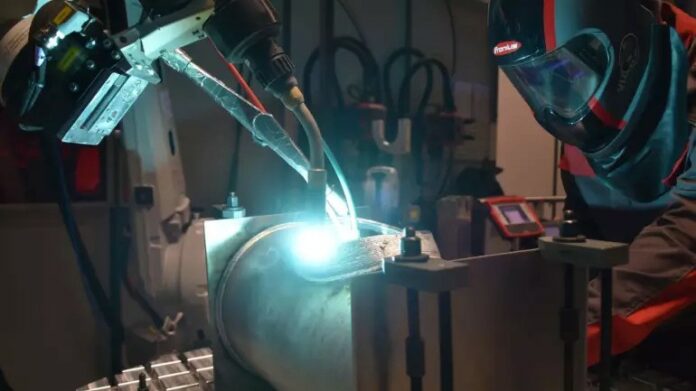Engineering company Fronius took part in the model qualification of an additively manufactured component in collaboration with MIGAL.CO, Linde Engineering, and TÜV SÜD.
As you may have read in this article, Fronius develops and commercializes a 3D-optimized welding process that can enhance metal 3D printing. As a member of the “Joint Working Group for additively manufactured components under the Pressure Equipment Directive of the German Institute for Standardization (DIN),” the company was working with other companies to assess the applicability of the draft standard prEN 13445-14 to the components of unfired pressure vessels.
Each member of this working group brought their expertise to specific process chain methods at their respective locations: material qualification, design review, process qualification, additive manufacturing, component, pressure testing, and full documentation of the process chain. In the end, a binding additive manufacturing procedure specification (AMPS) was subsequently created.
The specific expertise of Fronius as part of this project
First and foremost, just like other wire-based processes, Fronius’ CMT welding process called “Fronius Additive”, melts the welding wire, building up the workpiece layer by layer.
To stop too much heat flowing into the workpiece, they must be designed to apply as little energy as possible. The MIG-based Cold Metal Transfer welding process (CMT) from Fronius is especially suitable for metal 3D printing of aluminum components. CMT is a “cool” dip transfer arc process that minimizes the heat input, despite its high deposition rate.
This process is therefore ideal for additive welding, where the cyclical build-up of beads causes a high heat input. CMT supports functions that are perfect for metal 3D printing. “Power correction” is a typical example. This function allows the electrical power to be precisely adjusted to the respective process phase while the deposition rate remains constant, a press communication explains.
“With our CMT Additive Pro functions, specifically developed for additive manufacturing, such as power correction, or the Deposition Stabilizer that keeps the deposition rate constant, we can precisely control the power input and thus the height and width of the weld,” explains Leonhard Reiter from Fronius R&D.
This makes Fronius’ solution ideal for the production phase of 3D printed parts. The path for the robotic welding task was planned using a 3D-modeled pipe branch in Fronius’ CAM software.
“We calculated the proposed additive build-up—the actual welding program—by entering the layer height, position, speed, and build-up strategy. The welding path was visualized in a robotic welding cell that we modeled in our software,” adds Leonhard Reiter of Fronius R&D.
A press communication explains that during the production per se, the various wall thicknesses in the transition to the branch were implemented via different oscillation amplitudes. A constant heat balance was required to ensure the optimal weld toe from bead to bead, and the uniform weld seam flow. Layer-specific welding jobs with specific parameters were used for this.
Furthermore, a water supply and return were provided for the components during the welding process. The water level this produced had to be far enough away from the welding point to maintain the interpass temperature in the qualified area. This allowed continuous welding without cooling breaks. Cooling of the component minimized component distortion and increased the deposition rate.
“To observe the build-up of the layers, we used a camera that was triggered in synchronization with the process. This allowed us to analyze the process deviations more accurately afterward,” says Reiter of Fronius R&D.
Read more here to discover how MIGAL.CO, Linde Engineering, and TÜV SÜD were involved in this standardization process. The experts at Fronius will provide further information about their expertise in Hall 12.0, booth C99, at Formnext 2024.
Author: Nagarjun M
Remember, you can post free-of-charge job opportunities in the AM Industry on 3D ADEPT Media or look for a job via our job board. Make sure to follow us on our social networks and subscribe to our weekly newsletter: Facebook, Twitter, LinkedIn & Instagram! If you want to be featured in the next issue of our digital magazine or if you hear a story that needs to be heard, make sure to send it to contact@3dadept.com.






